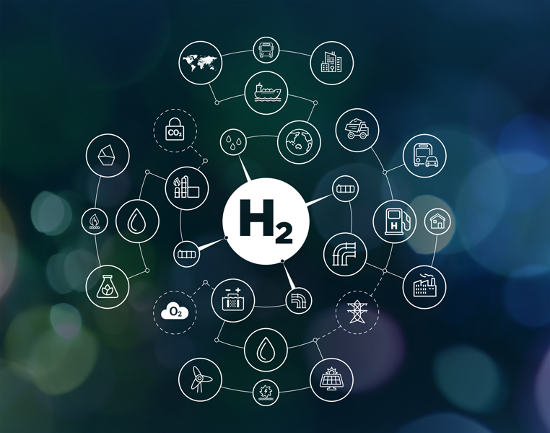From the latest Guidehouse Insights report that dropped into my inbox comes the following:
“Hydrogen is expected to play a critical role in enabling the energy transition. Hydrogen is possibly one of the best options for large-scale decarbonization in segments such as transport, industry, and buildings, which is a key driver of hydrogen adoption.”
What are the obstacles to hydrogen’s future?
One I addressed in my last posting about hydrogen in the past week. The cost to harvest from green energy compared to fossil fuel alternatives like natural gas remains high. As a result, hydrogen at present is uncompetitive for the remainder of the decade unless governments effect policies and businesses make the concerted effort is to increase investments in it.
Governments can implement policies similar akin to those adopted to support the existing fossil fuel industry: things like research grants and cash prizes, taking stakes in nascent research, commercial pilots and projects, and more. The money currently spent on fossil fuel subsidies can be redirected to low-carbon-emission hydrogen production instead.
As for public perception, there is the Hindenburg, the disaster that happened back in May of 1937. After the fire that brought down the airship hydrogen was seen as far too volatile for public safety.
The next impediment to widespread use is related to the conversion of legacy heating and cooling in buildings that currently use natural gas, coal, or oil. We are talking about tens of millions of structures and hundreds of millions of family homes around the world.
Then there is transportation which today relies almost exclusively on fossil fuels. A growing electrification movement is underway but it is still only a fraction of the total.
And finally, there are the primary industries like steel, cement, and aluminum that today use coal and natural gas in their production processes.
That’s a lot of change and a lot of money that needs to be spent to substitute hydrogen for existing legacy energy fuels and infrastructure.
Who Today is Doing Hydrogen Right?
For an answer to this question, I went to the Hydrogen Council, a global initiative of companies invested in making hydrogen a critical component for the transition of the world’s economy from carbon-based energy to green energy alternatives.
Today much of the hydrogen consumed annually comes from grey sources. It is derived from fossil fuels that contribute to global warming. That’s not doing hydrogen right.
What the Council envisions as a net-zero 2050 strategy is the rapid scaling in the production of blue and green hydrogen. Blue hydrogen is sourced from fossil fuel production that incorporates carbon capture and sequestration (CCS) or utilization (CCUS) technologies. The CO2 is either pumped underground for permanent storage or used as a product where it is inserted into a product like cement.
Green hydrogen comes from electrolysis powered by renewable, zero-emission electricity to harvest the gas from water or water vapour without carbon emissions.
At COP-26, the Council published a Hydrogen for Net Zero report. In it, it provides a path that removes 80 Gigatons of CO2 from global future emissions by adopting hydrogen in production, transportation, and infrastructure projects. The report describes over 520 such projects that include 90 Gigawatts of electrolyzer production, and $160 billion in direct investments already underway globally.
The frontloading of funding support over the decade, states the report, should scale green hydrogen production to bring its cost per kilogram down to make it competitive with fossil fuels. But the full potential of the hydrogen transition will remain unrealizable despite all of the projects described above without a funding gap of $540 billion in new investments being realized to bring the total to $700 billion by 2030. So where should the $540 billion be spent?
The Council has issued a policy toolbox that covers 48 proposals for production, importation, and the export of hydrogen. It addresses the retrofit and repurposing of existing natural gas infrastructure and the building of new dedicated transmission and storage systems for hydrogen. It includes government policies to develop a hydrogen infrastructure backbone to connect large-scale production to demand sites.
As much as I found the Council’s information useful, I still wanted to find out what countries are at the forefront of making hydrogen a key part of the global energy transition. I turned to another source, the H2 Bulletin. Among the countries and programs listed, Japan and the European Union appeared to be leading the pack.
But one country that I knew was doing hydrogen in a big way wasn’t listed in the H2 Bulletin. That is Iceland, a nation that is being described in some publications as the “Kuwait of the North” when it comes to hydrogen. That’s because the government of Iceland has an announced intention to become the first fully-operational national hydrogen economy by 2030. And it has the means to do it with access to copious amounts of zero-emission geothermal energy, and abundant water to draw upon for its electrolyzer to convert to hydrogen. The rest of us can watch and learn.
















